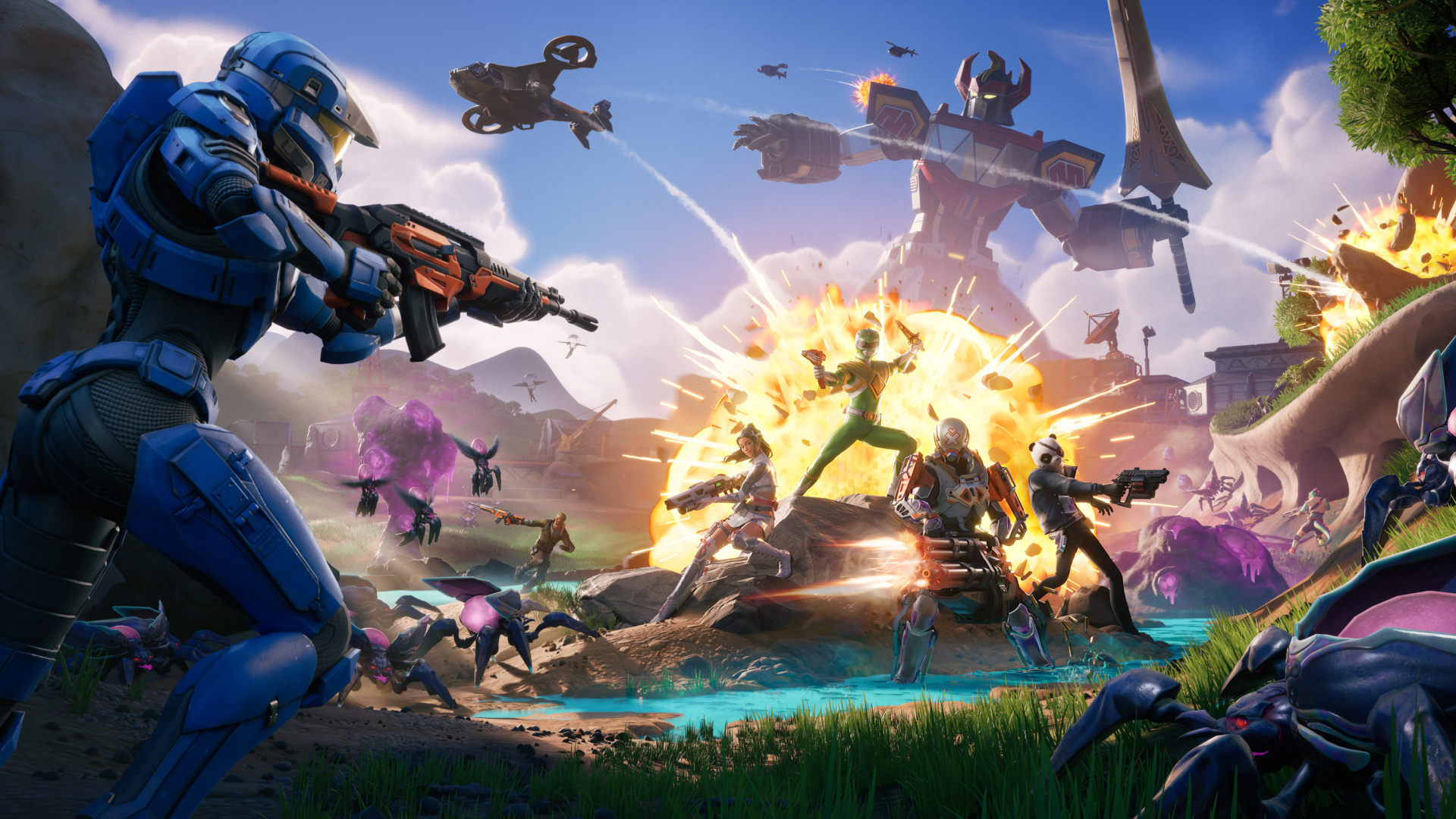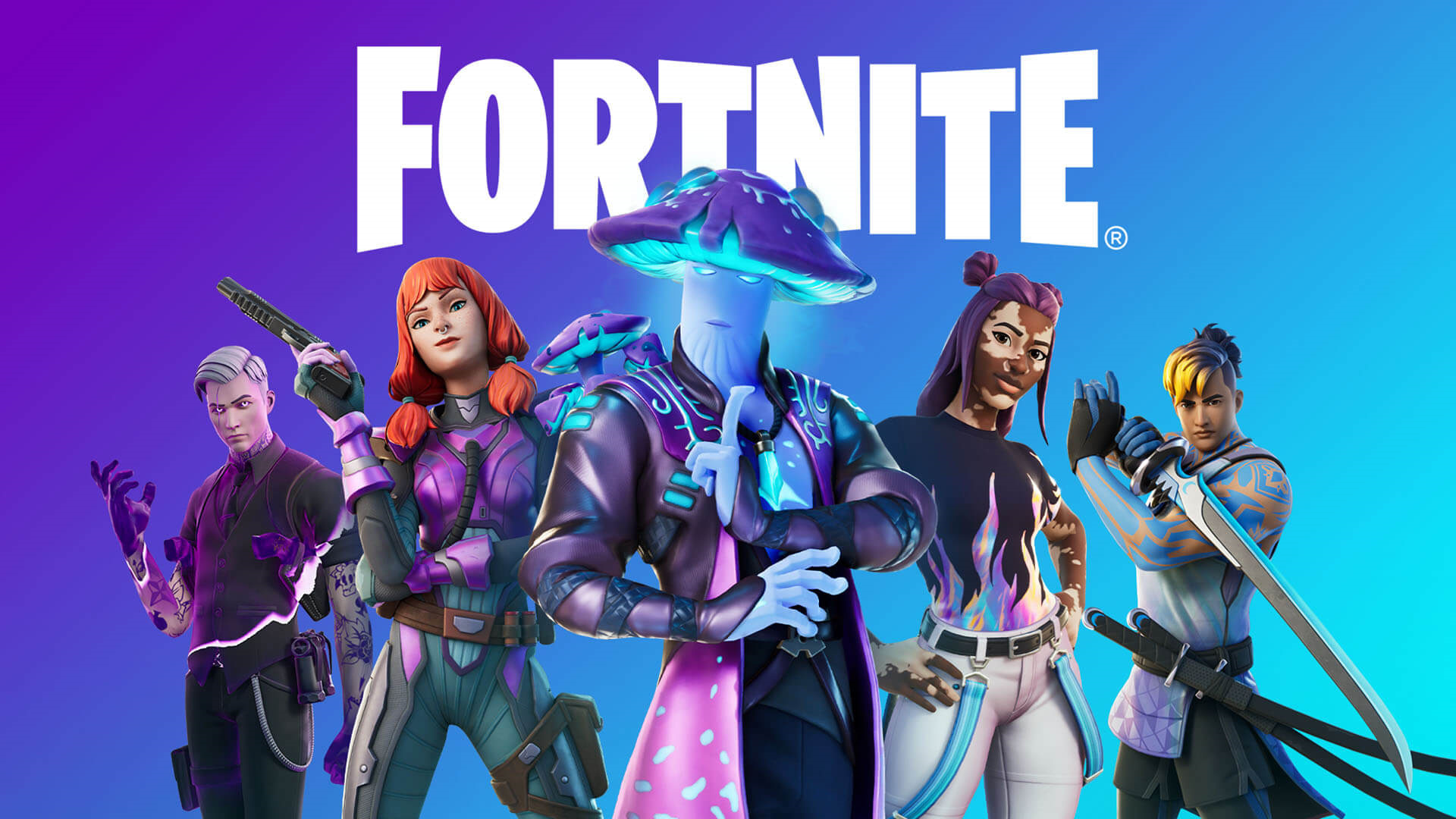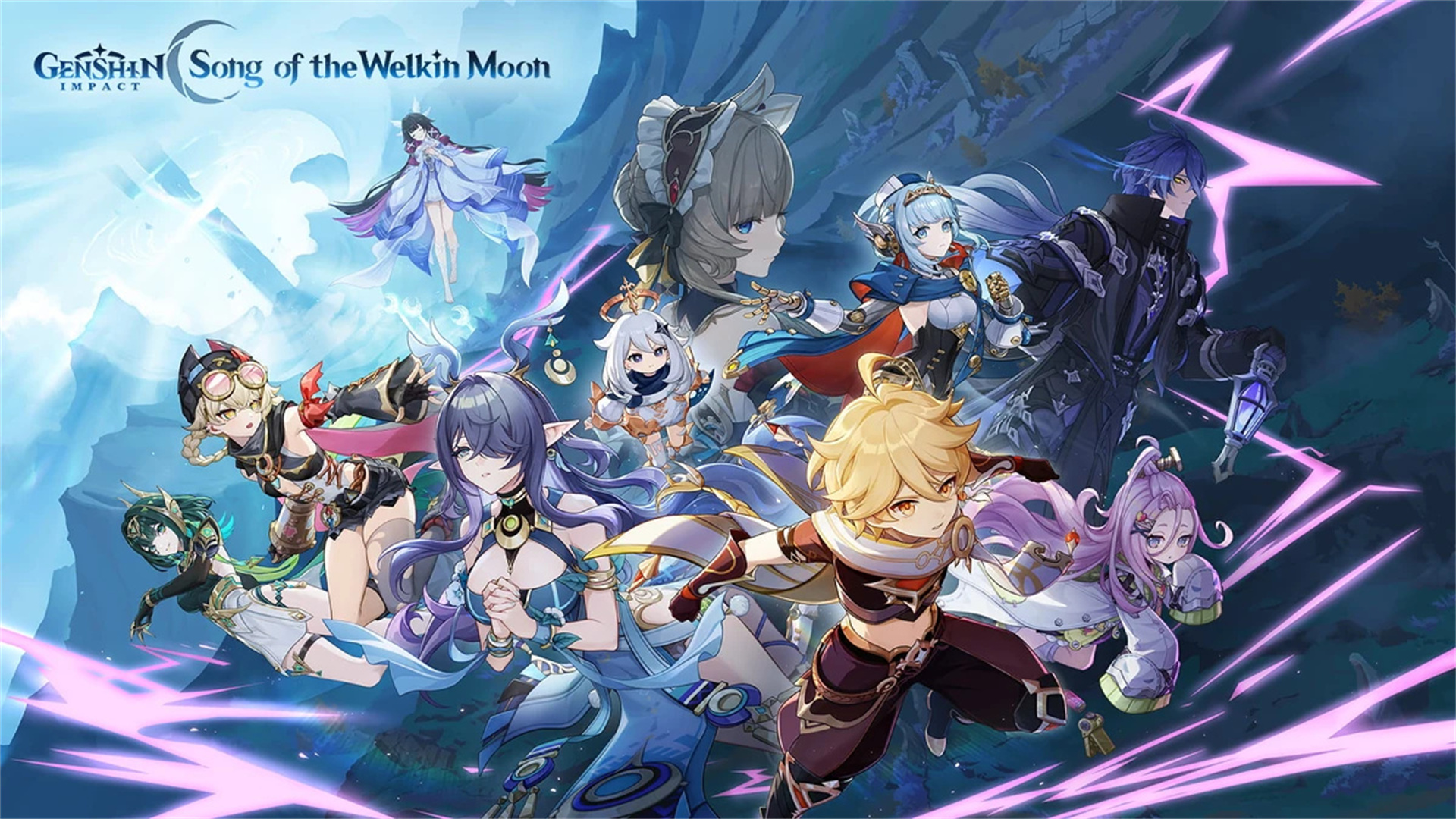The Skill Disparity Crisis in Fortnite: How Matchmaking is Eroding the Game's Core Appeal

1. Introduction: When Fairness Turns into a Struggle
Since its meteoric rise in 2017, Fortnite has been a titan in the battle royale genre, renowned for its vibrant world, creative building mechanics, and fast-paced action. Its unique blend of shooting, building, and strategic thinking made it more than just a game; it became a cultural phenomenon that tested players' adaptability and ingenuity.
However, as we move forward into the present, the conversation around Fortnite has shifted. Instead of buzzing about new seasons, exciting collaborations, or innovative game modes, players are increasingly voicing concerns about a growing skill gap and a flawed matchmaking system. This imbalance isn't just a minor inconvenience; it's undermining the very essence of Fortnite - the promise of fair and thrilling competition based on individual skill and strategic teamwork.
2. The Genesis of Fortnite's Matchmaking System
How Fortnite Matchmaking Works (or Should Work)
Fortnite employs a Skill-Based Matchmaking (SBMM) system, with the intention of grouping players of comparable skill levels together in the same lobbies. In theory, this should create evenly matched battles where every encounter is a test of skill.
The system takes into account various metrics, such as:
Kill/Death ratio (K/D)
Average damage per match
Placement frequency in the top ranks
Win percentage
When the System Was Equitable
In the early days of Fortnite, especially during the first few seasons, the player base was enormous and highly diverse. The SBMM system had an abundance of data to work with, enabling it to place players accurately without creating extreme mismatches.
Newcomers were pitted against other beginners, giving them a chance to learn the ropes. Experienced players, on the other hand, faced off against opponents of similar caliber, making each match a challenging yet rewarding experience. The game felt balanced, and players of all skill levels could enjoy the thrill of competition.
But as Fortnite continued to grow in popularity and the developers made adjustments to the matchmaking system, this balance began to falter.
3. The Onset of the Skill Gap Problem
Player Retention vs. Player Fairness
As the game's difficulty level increased, some casual players started to drift away. In an effort to retain this segment of the player base, the developers quietly modified the SBMM system, prioritizing player engagement metrics over pure skill metrics.
The goal was to ensure that new players would win often enough to feel a sense of accomplishment and keep coming back for more. However, this well-intentioned move set off a chain reaction of unintended consequences.
Experienced players were suddenly being placed into lower-skill lobbies to "balance" the queue times. At the same time, mid-tier players found themselves facing opponents who were at the elite level, such as those in the Champion division. The result was a series of unfair and unenjoyable matches for almost everyone involved.
Streamer and Pro Player Dilemmas
Top Fortnite streamers and professional players, like Ninja and Tfue, began to publicly voice their frustrations. They complained about being matched with random players or even bots mixed in with highly skilled opponents. When both the casual and competitive communities are expressing dissatisfaction, it's a clear sign of a deep-seated structural problem within the matchmaking system, rather than just a case of bad luck.

4. Competitive Mode: A Ladder on Shaky Ground
Competitive mode in Fortnite is supposed to be the ultimate test of a player's skill, providing the most accurate reflection of their abilities. However, in reality, it often fails to live up to this expectation and can be quite misleading.
Inflation and Exploitation
Recent updates have made competitive mode more "accessible" to a wider range of players. The developers changed the scoring system to place greater emphasis on placement rather than kills, which inadvertently encouraged passive and camping-oriented playstyles.
Players quickly caught on to this and started to exploit the system:
They would hide in obscure locations to secure a high placement and gain competitive points (CP).
By avoiding fights altogether, they could artificially inflate their ranks, climbing up the ladder without truly demonstrating their combat skills.
This rank inflation has led to a situation where players in the higher divisions, such as Contender, may lack the basic building and shooting mechanics expected of players in lower divisions like Division 6. As a result, the meaning of each rank tier has been diluted, undermining the integrity of the competitive mode.
The Resulting Paradox
High-ranked matches in Fortnite now present a chaotic and unbalanced mix of players:
Overly aggressive Champion and Contender players who are constantly looking for kills, often at the expense of strategic positioning.
Passive Contender players who are more focused on hiding and surviving to gain CP, rather than engaging in meaningful battles.
Casual players who have been mis-ranked due to the flawed scoring system and find themselves out of their depth in these high-stakes matches.
This unstable combination of players destroys both the competitive integrity and the overall player experience that Fortnite once promised.
5. How the Skill Gap Manifests In-Game
Building and Editing Mastery
Fortnite is famous for its complex building and editing mechanics, which have a very high skill ceiling. Advanced players can:
Rapidly build complex structures in the heat of battle to gain a tactical advantage.
Execute precise edits to create openings for shots or to quickly reposition themselves.
Perform intricate building combos that can completely outmaneuver and overpower opponents.
When the matchmaking system fails, beginners are thrown into lobbies where these advanced building and editing techniques are the norm. This leads to one-sided fights where newer players are often eliminated before they even have a chance to react, let alone understand what just happened.
Game Sense and Map Awareness
Veteran Fortnite players have an in-depth understanding of the map, including the best loot locations, rotation paths, and potential ambush spots. They can anticipate the movements of other players based on the storm circle and the sound cues in the game.
Casual players, on the other hand, may land in open areas without any cover, unaware of the dangers of third-party encounters. When the matchmaking system mixes players of vastly different skill levels in terms of game sense and map awareness, the matches become predictably one-sided, offering little in the way of a learning experience for the less experienced players.
Team Coordination
Fortnite offers various team-based modes, such as Duos and Squads, which require a high level of communication and coordination among team members. However, the matchmaking system often pairs solo queue players with random teammates against well-coordinated pre-made teams.
In these situations, it's not a fair test of individual skill; instead, it often turns into a one-sided massacre, with the pre-made team dominating the random squad due to their superior teamwork and communication.

6. The Psychological Impact on Players
The Casual Player's Frustration
Nothing is more demoralizing for a casual player than facing a series of unwinnable fights. A typical Fortnite experience for a casual player often follows this pattern:
They lose multiple matches in a row, often being eliminated quickly without having a chance to make a significant impact.
They start to feel like they are "dragging" their team down, especially in team-based modes, leading to a sense of guilt and self-doubt.
Over time, this frustration builds up, and they may eventually quit playing the game mid-season, never to return.
The data reflects this trend, with community reports and third-party analytics showing significant drop-offs in player activity within the first few weeks of new seasons.
The Competitive Player's Exhaustion
On the other end of the spectrum, skilled players face their own set of challenges. When they play casually, they often find themselves in "bot lobbies," where the competition is extremely weak, providing little to no challenge. In competitive mode, they are faced with unbalanced chaos, with a mix of players of varying skill levels and playstyles.
This lack of consistent challenge can lead to streamer burnout and pro-player attrition. When the top players in the game, who serve as the face of Fortnite and attract a large portion of the player base, start to lose interest and reduce their playtime, it has a severe ripple effect on the overall health of the game.
7. Why the Developers Struggle to Fix It
Technical Limitations
Fortnite runs on its own proprietary game engine, which, while powerful, may not have been originally designed to handle the complex and dynamic matchmaking requirements of a large-scale battle royale game.
The engine may struggle to quickly calculate various factors, such as:
Cross-platform skill averages, considering the different input methods and performance characteristics of different platforms.
Squad compositions, taking into account the individual skill levels of each team member and how they complement each other.
Regional latency adjustments, ensuring that players from different regions have a fair and lag-free gaming experience.
As the game continues to evolve and the player base grows, these technical limitations become more apparent, leading to inconsistent matchmaking results.
Player Population Fragmentation
With multiple servers around the world, crossplay enabled, and a wide range of skill tiers, the Fortnite player base has become highly fragmented. To maintain short queue times and prevent players from waiting too long for a match, the developers' matchmaking system is forced to relax its rules.
This means that it allows for wider skill disparities in lobbies just to fill them up quickly. While this may result in faster matchmaking, it also leads to more unfair matches, as players of vastly different skill levels are pitted against each other.
Business Pressures
There is an uncomfortable reality that the developers have to face: matchmaking tweaks can have a subtle impact on player spending. When players are constantly losing and feeling frustrated, they may be more inclined to purchase new skins, emotes, or even in-game currency in the hopes of improving their experience or simply refreshing their look.
This intertwining of profit motives and gameplay balance makes it difficult for the developers to make genuine reforms to the matchmaking system without considering the potential financial implications.

8. The Evolution of the Fortnite Skill Meta
From Pure Aim to Building-Centric Strategies
In the early seasons of Fortnite, mechanical skill, particularly aiming accuracy, was the primary determinant of victory. Players who could land precise shots were often the ones who came out on top in gunfights.
However, as the game has evolved, building and editing have become the dominant factors in determining a player's success. Legendary building combos and advanced editing techniques now play a crucial role in every engagement. This shift has raised the entry barrier for new players, as they not only need to have good aim but also need to master the complex building and editing mechanics to be competitive.
The Rise of Input Differences
PC players have a significant advantage when it comes to building and editing due to the precision and speed of mouse and keyboard controls. They can perform complex building maneuvers and quick edits much more easily than console players, who are limited by the constraints of a controller.
With crossplay enabled, PC and console players often find themselves fighting against each other, creating an unavoidable input gap that the developers have yet to address in a fair and balanced way. This further exacerbates the skill gap between players on different platforms.
9. Community Backlash and Player Uprising
The “Matchmaking Overhaul” Protests
Social media platforms like Reddit and Twitter (now X) have been flooded with waves of backlash whenever the developers mention any changes to the matchmaking system. Common complaints include:
"Casual lobbies feel like competitive matches, with highly skilled players everywhere."
"Every game seems to have at least one Champion or Contender player, making it impossible to win."
"I can't play with my friends without getting completely stomped because of the skill差距 in our lobby."
These complaints are not isolated incidents; they represent a growing sense of frustration and a loss of trust between the developers and the community. Players feel that their concerns are not being heard or addressed, leading to a breakdown in the relationship between the two parties.
Content Creator Departure
Major Fortnite streamers and content creators, such as LazarBeam and SypherPK, have periodically quit or significantly reduced their playtime due to matchmaking fatigue. These top-tier players are not only the face of the game but also serve as a major source of entertainment and inspiration for the player base.
When they leave or become less active, it has a severe impact on the overall player community. Their absence can lead to a decrease in viewership, a loss of interest in the game, and ultimately, a decline in the player base.






